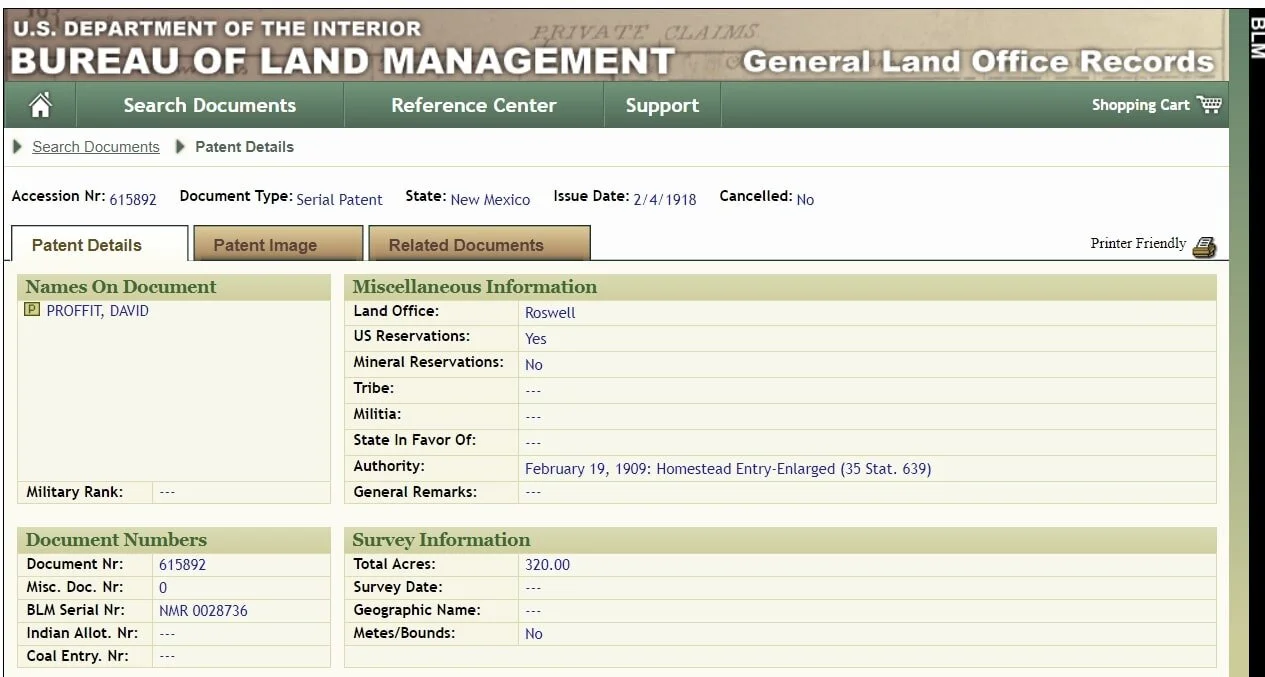City to consider panel's recommendation for Blackdom site MIKE BUSH RECORD EDITOR The Roswell City Council will consider a proposal to set up a memorial to Blackdom south of the Wool Bowl at Its regular meeting at 7 p.m. Thursday at City Hall. If the council approves the recommendatio n from the Building and Lands Committee, Blackdom Memoria l Garden will be established on 2.26 acres north of College Boulevard between Grand Avenue and the railroad tracks, The project will be built with $225,000 In capita l outla y funds received from the stale Legislature over several years, according to the Rev. Landjur Abukusumo, chairman of the Blackdom Heritage Cultura l Committee, which Is sponsorIng the project, which he described as a statuary garden. Blackdom was a community established 18 miles south of Roswell in 1920 by black families from throughout the South. It flourished until drought and a drop In Ihc walcr table In the late 1920s forced its residents to move elsewhere. The committee selected the area from three sites recommended by the city Parks and Statuary garden near Wool Bowl would honor 1920s black settlement near Roswell Recreation Department out of 11 potentia l locations, Abukusumo said. The proposal has gone through the Planning and Zoning, Parks and Recreation, and Building and Lands committees, he added. "We arc very hopeful and anticipat e tha t tha t will go through (the City Council) and then we can begin to pursue the design of the actual location." The committe e Is working with Smith Engineering on the design of the garden, Abukusumo said. "We're looking at between one and three statues In a setting where we can have plaques ... Indicating who these pioneers were, what products were produced and those kinds of things with regard to the actual history of the site." The committee Is considering several artists to creat e the statues and may choose one or more, Abukusumo Indicated. "We're looking for indigenous artists, artists In New Mexico, from New Mexico, who understand the history, the culture of New Mexico, " he added. The committee's vision Includes seating where people could relax perhaps have lunch in the area, "and just to look at the grounds and see the plaques that we'll have affixed showing what the history is and showIng the individuals who were Involved , what they were doing." Statues may be of one or more of the Blackdom pioneer leaders, he said, but a statue "won't be erected with regard to one Individual; It will be erected with regard to the commitment that these pioneers made to the site, to building the site and taking advantage of the Homestead Act." The Homestead Act of 1863 made 11 possible for the head of a household to obtain 160 acres of government land for a nominal filing fee as long as the person lived on the land, built a house and made certain Improvements. Abukusumo said the committee would like to see partnerships with school districts and churches to set up trips Into the area. "We could use it as an educational process both culturally Flyover Continued from Page A1 one claiming to represent Foley told the pilot the day before the flight to look for a large, inflatable alien at the entrance to a car dealership when flying over. "But that's the first time that any of (the pilots) say the term 'car dealership' ever came out," Montoya said. He said the request from Foley he had approved had been "legitimate" and for a Veterans Day and Marine Corps birthday celebration and had not mentioned the grand openIng of a car dealership. "I'm hearing It wasn't a Veterans Day celebration," he said. MEETINGS THIS WEEK The following meetings are scheduled for this week In Roswell: Thursday, Feb. 9 9 a.m. - Communit y Improvement Commission meeting. At the Parks and Recreation office conference room, 1101 W. Fourth St. 7 p.m. - Roswell City Council meeting. At the City Hall council chambers, 425 N. Richardson Ave. Montoya said a special form should have been filled out to request the flyover, although, he added, he had not been aware in Novembe r tha t the form had been required since 2003. "I didn't know ther e was a change In 2003," he said. He also said no forms had been filled out for any of the 14 flyovers he approved the weekend starling Nov. 11. "So we're going to make sure we initiat e tha t and do that," Montoya said, referring to the use of the forms. Montoya said Barker also stated falsely that Montoya had Initiate d an investigation because of Barker's report on the Roswell flyover, Montoya said he had ordered an audit of the entir e flyover program months ago and that the Roswell flyover had been included in that. He also said that the flyover was part of a previously scheduled cross country navigation mission. "So in that, It doesn't really matter where they're flying, It just matters tha t they go through different terrain and cross over Into different states. So they just worked (th e Roswell flyover) Into the flight plan," Montoya said. Roswell Mayor Pro Tern and City Councilor Jeanlc Whltwam attende d the grand opening and read a mayoral proclamation on behalf of Mayor Bill Owen, which marked Nov. 10 as "Toyota Scion Grand Opening Day" and thanked Krumland and his wife, Linda, "for Investing In southeastern New Mexico and making Roswell their home!" Whltwam said Tuesday that the opening "was just a very patriotic event." "All I remember is being so proud to be an American," she said. "I was so comforted at the display of military might." She added that she had "no idea" how the planning of the event came about. "I wasn't part of that at all," she said. and with regard to what has happened In the past all the way up to what Is now taking place in the present," he said. "Our vision Is to bring to fruition an opportunity for African Americans to see their culture, heritage, legacies that have been left by these pioneers, to understand how difficult this was, to understand that they came from all over the southern states in the postCivil War era and were looking for self-determination and were looking for protection In numbers," Abukusumo said. If the City Council approves the project, the committee will immediately begin working with Smith on a master plan and a feasibility study. The committee will then decide on an artist or artist for the statues. Abukusumo said the relationship between the city and the Black Heritage Cultural Committee has been "exemplary" despite complaints from some Individuals that the city was dragging its feet on the project. Some confusion may have arisen because the committee has been pursuing different STATE BRIEFS phases of the overall Blackdom project, including possible future expansion, he added. The committee is interested in the 27 acres Immediately north of the proposed site, north to the Wool Bowl, for expansion, but that parcel Is now under lease to the Roswell Independent School District and won't become available unless the district agrees to terminate its lease. The committee also wants to set up a Web site that could be linked to those of other African American historical sites so people would be motivated to come to the Southwest to visit the Blackdom site, Abukusumo said. He said the committee also plans to use the Web site to sell replicas of the statue or statues that go up in Blackdom Memorial Garden to raise money for subsequent phases of the memorial. The committee also wants to attach the memorial garden to the New Mexico History Museum being built In Santa Fe so the new museum can have an area devoted to Blackdom, Abukusumo said.
If you are using Dr. Nelson’s Research, CITE a Brotha!!!
Most recently published articles (at the top) - Celebrating the Blackdom Centennial
Blackdom Had Interesting History By Ernestine Chesser Williams The settlement of Blackdom emerged, flourished, and then vanished. The only evidence that such a community ever existed are some old concrete foundations, boundary markers,- and a few lonely graves that are partially covered over by blowing drifting sand and rough prairie grass. Blackdom was located on the open prairie eighteen miles south of Roswell. It was unique in that it was composed mostly of Black homesteaders. Black sharecroppers in the South were lured to New Mexico by advertising that promised free-land and an opportunity for a new beginning. Blackdom was started in 1901 by Frank Boyer, a teacher from Georgia. In time, between 50 and 75 families claimed some 15,000 acres on the prairie. They erected wooden shacks, worked hard and lived frugally. Since there was no natural water, they drilled wells or carried water from neighboring windmills. They gathered cowchips on the prairie for fuel. The homesteaders were experienced farmers accustomed to a land with rainfall sufficient to grow crops. In this semi-arid Southwest where irrigation was necessary, many farmers failed because they had no money to drill wells or to buy expensive pumping systems. Some Black homesteaders worked as farm-hands in the Dexter community or hired out as cowboys to the big ranches to the west. Lillian Westfield Collins, whose parents came to Blackdom in 1907, when she was a small child, shared many of her memories with the Historical Society for Southeast New Mexico. She remembered lush produce from fields, gardens and orchards which they shared. True and long-lasting friendships were formed there. She told of the Blackdom townsite with its own store, church and schoolhouse. Chaves County school records indicate the school was in operation with G. W. Maione as teacher from 1915 to 1920. Records for the preceding years are available, however it is reasonable suppose the school was open before that time. The next teacher recognized was L Wagoner in 1922 and again in 1928. Obviously there were other teachers between times but the record is not available. The schoolhouse was a one-room structure built on a concrete foundation. It had a pitched, shingled roof and clapboard siding with ornate trim across the front. On top of the building was a bell tower and underneath was a store cellar. Eventually the building moved to Cottonwood where it is still use. By the late 1920s, the irrigation wells in the Blackdom community failed because of excessive pumping in the Pecos Valley. The residents, with their dreams shattered, were forced to abandon the homesteads and move away. A few families moved into Roswell and established homes. Others went to a little town near Las Cruces, which is a settlement of Black farmers. Many were successful there as irrigation water was plentiful. Nearly all evidence of the settlement of Black homesteaders on the prairie had been swept away by the relentless wind. Blackdom passed into oblivion with few left to mourn her passing. Editor's Note: February h Black History month.
NEGRO KENTUCKY GOVERNOR SATED FROM MOB, ON TRIAL Murray, Ky., Feb.' 5.—With the trial of Lube Martin, negro,, scheduled to begin here today, local authorities were . wondering whether the remarkable oratorical powers of Governor A. O. Stanley would again be necessary to keep him from being lynched. Martin is charged with the murder of Guthrie Duiguid, a policeman. When his trial came up January 10, Judge Charles Bush and Denny Smith commonwealth attorney, agreed that the feeling against the negro was toe intense for a trial at that time and had the negro spirited away. The crowd became a mob and throughout the following night threatened to dy. namite the hotel where Judge Bush and Smith spent the night. Governor Stanley rushed to Murray on a special train, declaring that the mob would have to attack the governor of Kentucky before it attached Judge Bush and Smith. He • pleaded with the mob and it finally dispensei. Special precautions were taken to guard the negro today.
B etween Roswell and Artesia, west of found it difficult to travel, so they chose to Ghana and Sierre Leone. Abukusumo said Dexter and Hagerman, split by U.S. walk. plans are also in the works to include a • - - - •— • restaurant with menus featuring recipes from some of the best black cooks in the U.S. he said. Abukusumo wants to infuse a sense of etween Roswell and Artesia, west of Dexter and Hagerman, split by U.S. Highway 285, lies the scant physical remains of what was, a century ago, a thriving community of African-Americans known as Blackdom. The town site, first settled in 1901 and officially established as a township in 1920, at its height, occupied some 15,000 acres and had 300 residents from 25 families. But its roots as the only site in southeastern New Mexico populated entirely by black pioneers go back to 1840s Georgia. Blackdom got its start as the dream of Pullam, Ga., resident Henry Boyer, a free black man who served as wagoner in Col. Alexander Doniphan's Army Missouri Volunteers, sent to New Mexico to serve in the Mexican War of 1846. "He saw the vast areas, Just unlimited space and he went home and talked about it, but it wasn't until 50 years later (his sojn) Francis Boyer came put here," said the Rev. Landjur Abukusumo, pastor of Washington Chapel Christian Church and president of the Chaves County chapter of the National Association for the Advancement of Colored People. "So he came out here and a year later, he went back and got his wife Ella and their kids and came back." The road to get there was, literally, a long one, but they did get there. That the ' town existed at all was due to several factors, Abukusumo said. "At the advent of the Emancipation Proclamation, with regard to the slaves, they were freed but they didn't have any determination, any resources, any substance to speak of to protect themselves to initiate any financial gain or financial substance," Abukusumo said. "A lot of them sharecropped or stayed on the plantations but some of them moved on because they'd fled to the big cities or gone on the Underground Railroad to some of the northern cities." Enter the Boyer family. Frank Boyer and Daniel Keyes, knowing of the Homestead Act of 1862, which made property and land available to people to work the land, decided to make the journey from Pullam, Ga., to the West. But because of the Jim Crow laws enacted in the south to mandate "separate but equal" status for blacks but resulting in inferior status, schools and housing among other things, the men found it difficult to travel, so they chose to walk. "They wanted self-determination and they wanted safety in numbers," Abukusumo said. "And that is what caused Blackdom to grow and become what it became in the 1917 and 1918 time frame, when it was at its height." The story of Blackdom, which eventually hit hard times when drought and a lack of resources to drill wells resulted in the town being largely abandoned by 1930, is just one interesting chapter in the story of African-Americans in the U.S. February is also Black History Month, a time to celebrate the achievements of blacks in every area. "If you don't know where you come from, it's hard to know where you are and impossible to know where you're going," Abukusumo said. "We look back to get a sense of who we are and what our culture is. Medicine, architecture, all kinds of farming things, cattle., arts, music — we come from all of that and it's a travesty not to know who you are and where you come from and the overall makeup of your background and culture." Some of the contributions of AfricanAmericans, such as traffic lights, intravenous fluid systems and hypodermic needles are used every single day but many people don't know these things were invented by blacks, Abukusumo said. Nor do they know certain phrases or sayings, such as "the real McCoy," after an invention by a black man named McCoy, came from blacks, he added. • Abukusumo is also heading a project to build a black American heritage center and museum commemorating Blackdom and the pioneers who lived there. The project currently has gathered $235,000 in capital outlay funds for planning. An architectural firm out of Santa Fe is working on building models of the com- ,plex, which will include performance space, an exhibit hall and genealogical and historical research areas, and statuary depicting the pioneers of Blackdom. The site for this project will be north of College Boulevard and south of the Wool Bowl. Exhibits in the museum, which Abukusumo hopes will draw tourists from across the U.S., will include different articles from the areas of Africa the blacks in our area came from, such as Nigeria, pride and inclusion in the African-Americans of Roswell and Chaves County. "I think our greatest challenge is that we need to understand we came outpf a. time that was post-Civil War and Jim Crow, and our idea was to maintain a low profile and that permeated the African-American community here and still permeates it," Abukusumo said. "The challenge is to insinuate ourselves into the sociopolitical arena of the community and to participate more in the community, to validate ourselves by achievement. Overcoming our natural sense of having been rejected and overcoming the things that still are residual in our mindset and stepping up and doing those things that our culture, our talents, our skills and our experience and abilities lead us to do." When asked how close we, as a society, are to reaching Martin Luther King Jr.'s goals on equality and acceptance, Abukusumo said a great deal of progress has been made, but much remains, as well. The growth of the MLK Breakfast, for instance, shows definite progress, Abukusumo said. In its first year, 60 people attended; this'year, more than 300 were there. The Juneteenth celebration, held on June 19 to commemorate the announcement of the abolition of slavery in Texas, is another sign of progress, though Abukusumo said generally, there is more awareness in larger cities. "We advocate and have advocated in our MLK Breakfast, for example multicultural endeavors — the things MLK advocated and preached in his 'I have a dream' speech, that we will be judged by our character and the content of our character, rather than the color of our skin. We'd like to see the infusion of various cultures in the total culture of our community." In Roswell, that culture brings everything back full circle to Blackdom. "If you're an African-American in America, you're about certain things, one of which is acceptance and one of which is dissuading people from the idea that you are lazy and have low selfesteem and low self-acceptance," Abukusumo said. "One of the things that speaks against that is the idea that we have early pioneers. These early pioneers were extremely industrious, extremely hard-working and faith-based. "They were looking for opportunity. They did not seek to oppose. They sought to infuse their community with those ideas, with those results that came of hard work and therefore take a position of equality, based on those ideas of hard work."






















